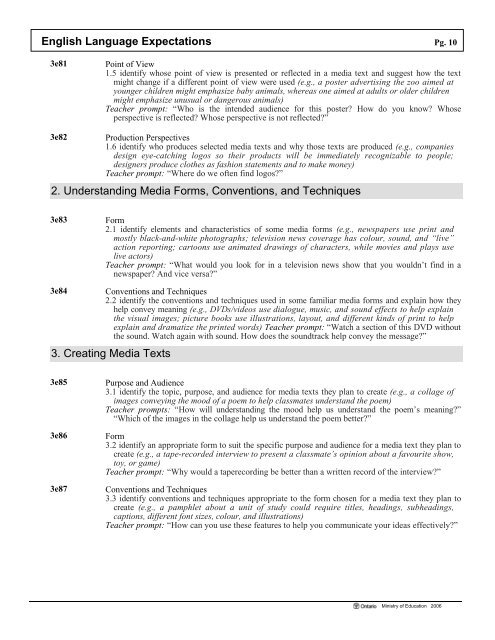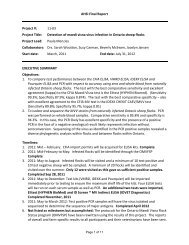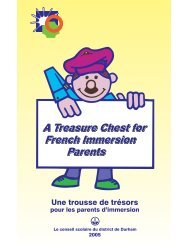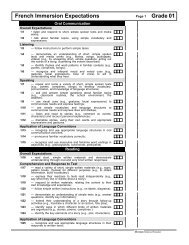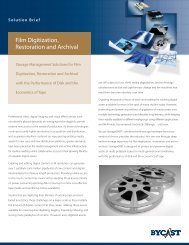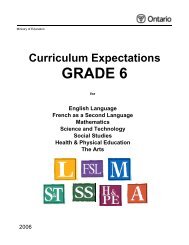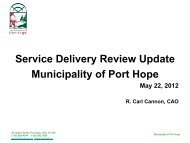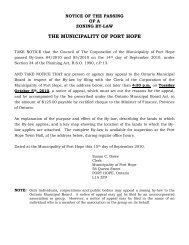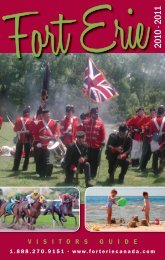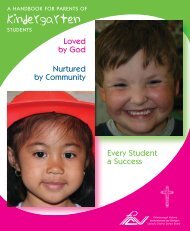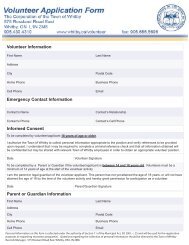GRADE 3 - PVNC Catholic District School Board
GRADE 3 - PVNC Catholic District School Board
GRADE 3 - PVNC Catholic District School Board
You also want an ePaper? Increase the reach of your titles
YUMPU automatically turns print PDFs into web optimized ePapers that Google loves.
English Language Expectations<br />
Pg. 10<br />
3e81<br />
Point of View<br />
1.5 identify whose point of view is presented or reflected in a media text and suggest how the text<br />
might change if a different point of view were used (e.g., a poster advertising the zoo aimed at<br />
younger children might emphasize baby animals, whereas one aimed at adults or older children<br />
might emphasize unusual or dangerous animals)<br />
Teacher prompt: “Who is the intended audience for this poster? How do you know? Whose<br />
perspective is reflected? Whose perspective is not reflected?”<br />
3e82<br />
Production Perspectives<br />
1.6 identify who produces selected media texts and why those texts are produced (e.g., companies<br />
design eye-catching logos so their products will be immediately recognizable to people;<br />
designers produce clothes as fashion statements and to make money)<br />
Teacher prompt: “Where do we often find logos?”<br />
2. Understanding Media Forms, Conventions, and Techniques<br />
3e83<br />
Form<br />
2.1 identify elements and characteristics of some media forms (e.g., newspapers use print and<br />
mostly black-and-white photographs; television news coverage has colour, sound, and “live”<br />
action reporting; cartoons use animated drawings of characters, while movies and plays use<br />
live actors)<br />
Teacher prompt: “What would you look for in a television news show that you wouldn’t find in a<br />
newspaper? And vice versa?”<br />
3e84<br />
Conventions and Techniques<br />
2.2 identify the conventions and techniques used in some familiar media forms and explain how they<br />
help convey meaning (e.g., DVDs/videos use dialogue, music, and sound effects to help explain<br />
the visual images; picture books use illustrations, layout, and different kinds of print to help<br />
explain and dramatize the printed words) Teacher prompt: “Watch a section of this DVD without<br />
the sound. Watch again with sound. How does the soundtrack help convey the message?”<br />
3. Creating Media Texts<br />
3e85<br />
3e86<br />
3e87<br />
Purpose and Audience<br />
3.1 identify the topic, purpose, and audience for media texts they plan to create (e.g., a collage of<br />
images conveying the mood of a poem to help classmates understand the poem)<br />
Teacher prompts: “How will understanding the mood help us understand the poem’s meaning?”<br />
“Which of the images in the collage help us understand the poem better?”<br />
Form<br />
3.2 identify an appropriate form to suit the specific purpose and audience for a media text they plan to<br />
create (e.g., a tape-recorded interview to present a classmate’s opinion about a favourite show,<br />
toy, or game)<br />
Teacher prompt: “Why would a taperecording be better than a written record of the interview?”<br />
Conventions and Techniques<br />
3.3 identify conventions and techniques appropriate to the form chosen for a media text they plan to<br />
create (e.g., a pamphlet about a unit of study could require titles, headings, subheadings,<br />
captions, different font sizes, colour, and illustrations)<br />
Teacher prompt: “How can you use these features to help you communicate your ideas effectively?”<br />
Ministry of Education 2006


